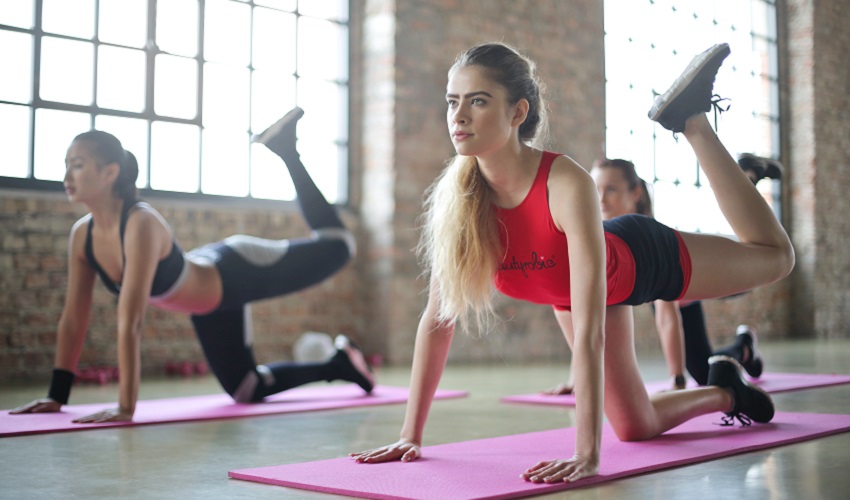Living with diabetes can be challenging, especially for seniors who may also face limited mobility. However, incorporating gentle exercises into their daily routines can significantly contribute to managing diabetes and improving overall well-being. In this article, we will explore the importance of exercise for seniors with diabetes, the challenges they face due to limited mobility, and provide practical tips and exercises tailored to their needs.
Understanding Diabetes and Its Impact
Diabetes is a chronic condition characterized by high blood sugar levels. It is classified into two main types: type 1 diabetes, where the body fails to produce insulin, and type 2 diabetes, where the body becomes resistant to insulin or doesn’t produce enough of it. Seniors are particularly susceptible to diabetes due to age-related factors and lifestyle choices.
The impact of diabetes on seniors’ quality of life cannot be understated. It increases the risk of complications such as cardiovascular disease, nerve damage, kidney problems, and vision issues. Proper management of diabetes is essential to prevent these complications and maintain a healthy lifestyle.
The Role of Exercise in Diabetes Management
Exercise is a cornerstone of diabetes management and offers numerous benefits for seniors. Regular physical activity helps control blood glucose levels, improves cardiovascular health, enhances insulin sensitivity, aids in weight management, and provides psychological benefits such as stress reduction and improved mood.
Engaging in exercise can help seniors with diabetes achieve better blood glucose control. Physical activity promotes glucose uptake by the muscles, reducing the need for insulin. It also enhances insulin sensitivity, allowing the body to utilize insulin more effectively.
Moreover, exercise improves cardiovascular health by strengthening the heart and reducing the risk of heart disease. It helps lower blood pressure, improve cholesterol levels, and enhance overall cardiovascular fitness, leading to a reduced risk of heart-related complications.
Maintaining a healthy weight is crucial for diabetes management, as excess weight can contribute to insulin resistance. Exercise, along with a balanced diet, helps seniors achieve and maintain a healthy weight, reducing the risk of diabetes-related complications.
Participating in regular exercise also provides psychological benefits. It can alleviate stress, anxiety, and depression, enhancing overall well-being and quality of life.
Challenges Faced by Seniors with Limited Mobility
Seniors with limited mobility face unique challenges when it comes to incorporating exercise into their daily routines. Conditions such as arthritis, joint pain, muscle weakness, and balance issues can hinder their ability to engage in traditional forms of exercise. As a result, they are at a higher risk of leading a sedentary lifestyle, which further exacerbates the challenges of managing diabetes.
Gentle Exercises for Seniors with Limited Mobility
It is important for seniors with limited mobility to consult with their healthcare professional before starting any exercise program. They can provide tailored recommendations based on individual capabilities and limitations. Here are some gentle exercises suitable for seniors with limited mobility:
Chair Exercises: Seated leg lifts, arm curls, seated marching, and chair yoga are excellent options to improve strength and flexibility.
Stretching and Flexibility Exercises: Shoulder rolls, ankle circles, wrist stretches, and neck stretches help maintain flexibility and improve range of motion.
Balance Exercises: Toe stands, heel-to-toe walk, standing on one leg, and leg swings are beneficial for improving balance and stability.
Water Exercises: Water aerobics, swimming, and water walking are low-impact exercises that reduce stress on joints while providing resistance for strength training.
Creating a Safe Exercise Routine
When designing an exercise routine for seniors with limited mobility, it is essential to prioritize safety and individual needs. Here are some considerations:
Consultation with Healthcare Professional: Before starting an exercise program, seniors should consult with their healthcare professional to ensure it aligns with their medical condition and individual limitations.
Warm-Up and Cool-Down Exercises: Gentle warm-up exercises such as marching in place or arm swings prepare the body for exercise. Similarly, cool-down exercises like stretching help prevent muscle soreness and promote flexibility.
Incorporate Variety: A well-rounded exercise routine should include strength, flexibility, and cardiovascular exercises. This can be achieved through a combination of chair exercises, stretching, and low-impact aerobic activities.
Monitoring Blood Glucose Levels: Seniors with diabetes should monitor their blood glucose levels before, during, and after exercise. This helps them understand how their body responds to physical activity and make necessary adjustments to their diabetes management plan.
Hydration and Proper Nutrition: Staying hydrated is crucial during exercise. Seniors should drink water before, during, and after exercise sessions. Additionally, maintaining a balanced diet that aligns with their diabetes management plan is important for optimal health.
Building a Supportive Environment
Creating a supportive environment is vital to help seniors with limited mobility stay motivated and engaged in regular exercise. Here are some strategies:
Involving Family Members and Caregivers: Encourage family members and caregivers to participate in exercise routines. This not only provides companionship but also helps motivate and support seniors in their fitness journey.
Encouraging Social Interactions: Organize group activities or encourage seniors to join exercise classes specifically designed for their age group. This fosters social interactions and adds an element of enjoyment to their exercise routine.
Creating an Accessible Exercise Space: Ensure that the exercise space at home is safe, well-lit, and free from obstacles. Seniors should have easy access to any necessary equipment or aids.
Utilizing Assistive Devices and Equipment: Assistive devices, such as walkers or canes, can provide stability and support during exercise. Additionally, using resistance bands, light weights, or exercise balls can add variety and effectiveness to the workout.
Additional Considerations for Diabetic Seniors
In addition to exercise, diabetic seniors should keep the following considerations in mind:
Regular Check-ups and Medical Supervision: Regular check-ups with healthcare professionals are essential to monitor diabetes management and address any emerging health concerns.
Medication Management: Seniors should be mindful of the timing and dosage of their diabetes medications in relation to exercise. Consultation with healthcare professionals is crucial to ensure medications are adjusted appropriately.
Recognizing Warning Signs and Responding to Emergencies: It is important for seniors to be aware of warning signs of low blood sugar (hypoglycemia) during and after exercise. They should know how to respond to these situations promptly.
Combining Exercise with a Balanced Diet: Exercise should be complemented by a balanced diet that supports diabetes management. Seniors should work with healthcare professionals and dieticians to develop a suitable meal plan.
For seniors with limited mobility, managing diabetes can be challenging, but it’s not impossible. Gentle exercises tailored to their capabilities and needs can play a significant role in diabetes management, improving blood glucose control, cardiovascular health, strength, flexibility, and overall well-being. By creating a safe exercise routine, building a supportive environment, and considering additional factors specific to diabetic seniors, it is possible to manage diabetes with ease and enhance the quality of life for seniors.




